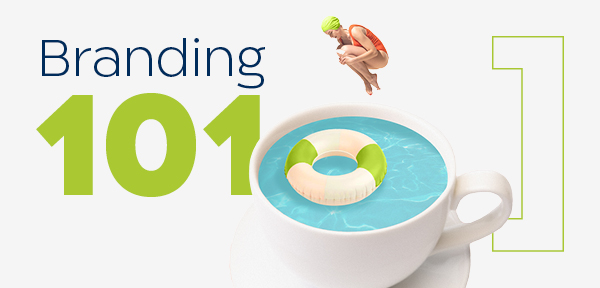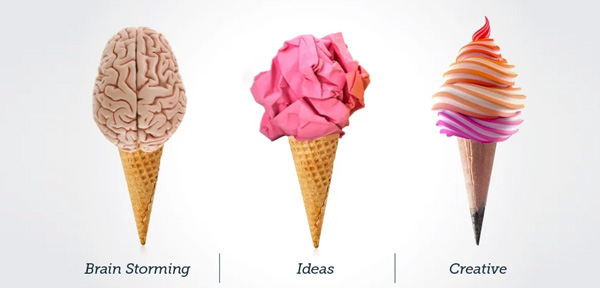The BL[OZ]
Rules, Regulations & Medical Brands How your medical brand can stand out within the regulatory framework
By
Nirit Elyovich, MBA
, 15/08/2024
Balancing marketing ambition with regulatory compliance is no easy task for medical brands. Our latest blog explores how early collaboration between marketing and regulatory teams can transform these challenges into opportunities, ensuring your brand stands out while staying compliant. Discover the smart strategies to help your brand shine within the regulatory framework.
When the journey takes an unexpected turn
During branding strategy kick-off meetings, we take a deep dive into your product, technology, and service. We’re looking for a fresh perspective, a promise not yet made, a story yet to be told. At this point, we get excited as we hear about groundbreaking technologies, solutions, and life-enhancing, life-prolonging products. Our jaws drop. With this WOW feeling, we continue the learning process in which we talk to customers, analyze the competition, and create a multi-participant meeting within the company to fine-tune its significant and differentiated strengths and generate outstanding benefits for its customers. As the process continues, we begin to understand the regulatory limitations. Suddenly, “Cinderella”, your extraordinary technology is being held back by regulatory limitations and is covered with “soot”.
Understanding limitations and optimizing capabilities
During the process, we’ve heard “It’s a given” or “It's powerful, but I can't confirm it" more times than we can count. Responses like these made us understand there must be a better way. That’s how our new module was born. It’s placed right at the beginning of the branding strategy process, which sets the stage for an open and guided dialogue between marketing and regulatory early on.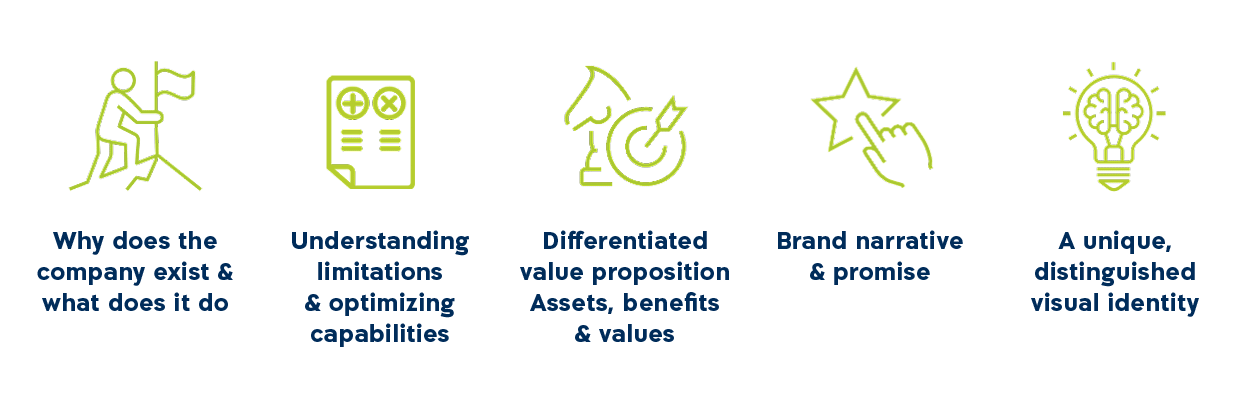
Challenging the norms
This dialogue is about helping the marketing team to understand the limitations in depth, and for the regulatory team to delve into the marketing team’s needs. It’s an authentic dialogue that creates a space to carry out activities that weren’t possible before. Understanding the precise needs opens up new perspectives and enables solutions within the boundaries of regulations. We understand the importance of compliance, but our experience shows that there are many degrees of freedom that are not being tested.It’s not about overstepping the bounds of the approved claims, but we also don’t want to take a step backward in the name of conservatism.
Sometimes it's a matter of overall wording, sometimes it's just changing one word. It's the little things that make a big difference. Stopping to ask questions often gives you a competitive advantage. Sometimes, there won’t be any flexibility in the claims you make, but at least you’ll know that you’ve turned over every stone.Structured and managed conflicts are an opportunity
Remember, whoever sits at the decision-making table wants the company to succeed and do the best they can. Inherently, conflict is not a negative; it can also be an opportunity. Don't let emotions run the process. As we often say, “Don’t be right, be smart!” As with every relationship where there’s an inherent conflict, there’s great value in professional guidance to create the conditions for a productive dialogue. To meet this need, we’ve created a special collaboration between OZ Global B2B and Leap, led by Moran Faibish, who has extensive experience in leading marketing in global medical companies. Moran has hands-on experience in bridging the gap between marketing and regulations to create deep and unique brand promises — promises that aren’t possible without providing an informed and professional framework that enables constructive communication.Play smart
The more we play smart within the regulatory limits to make the most of your claims, the more we can create a differentiated value proposition that more accurately reflects your breakthrough technology. This is how your brand will shine. We’ll be there every step of the way to guide the process, refine the messaging, and make sure your “WOW” comes through loud and clear. If you’ve nodded your head while reading this, it’s time for us to talk.


From Fruit Stand to Frontlines: The Unexpected Journey of the Watermelon Emoji
By
Rivi Kesten Buk
, 25/07/2024
Navigating digital symbolism can be intricate, but the case of the watermelon emoji adds a unique layer of complexity. It’s a prime example of how symbols can shape online narratives and influence global perceptions. This post uncovers the strategic use of the emoji and offers actionable ways to support pro-Israeli voices in the digital arena.
But first, a disclaimer: My name is Rivi, and I'm a proud Zionist (I believe in the Jews' right to self-determine in their ancestral homeland).
In recent years, while immersed in the online world of Hasbara, I’ve witnessed firsthand the challenges of representing Israel's narrative in a vast digital landscape. With Jews comprising just 0.2% of the global population, our voice can easily be drowned out in the maelstrom of social media.
This blog post examines a fascinating case study in digital activism: how a simple fruit emoji became a battleground for narrative control. We'll explore the marketing strategies at play and their implications for Israel's online presence. While we analyze these tactics objectively, our goal is to empower pro-Israeli voices in this ever-evolving digital dialogue.
At the end of this blog, you'll find actionable recommendations on supporting content creators who are amplifying Israel's perspective in the online world.
The Roots of a Symbol
As we approach National Watermelon Day on August 3rd, let's slice into a juicy marketing tale that's more complex than meets the eye. It's the story of how a simple fruit emoji became a powerful symbol in one of the world's most enduring conflicts. The roots of this story begin back in the 1960s, when the watermelon, with its colors reminiscent of the Palestinian flag, became a covert symbol of Palestinian identity. Palestinian activists used the watermelon imagery in graffiti and posters, primarily because in 1967, Israel passed a law prohibiting the raising or display of Palestinian flags (which had been canceled, during the Oslo Accords in the 1990s). The watermelon became a symbol of political resistance, and if we fast-forward to today's digital age, this symbol has found new life as an emoji, skillfully wielded by pro-Palestinian activists in their online narratives.

A Clever Marketing Strategy
But here's where it gets interesting from a marketing perspective: the use of the watermelon emoji isn't just a random choice. It's a clever strategy that serves multiple purposes:- Bypassing Algorithms: By using an innocuous fruit emoji, activists can often fly under the radar of content moderation systems. It's a digital sleight of hand that marketers call "Algospeak."
- Viral Potential: Emojis are the universal language of the internet. They're easy to use, easy to share, and can convey complex emotions and ideas in a single character. It's virality in its purest form.
- Continuity of Message: By adapting a historical symbol to modern digital platforms, the pro-Palestinian movement maintains a consistent narrative across generations. It's brand continuity at its finest.
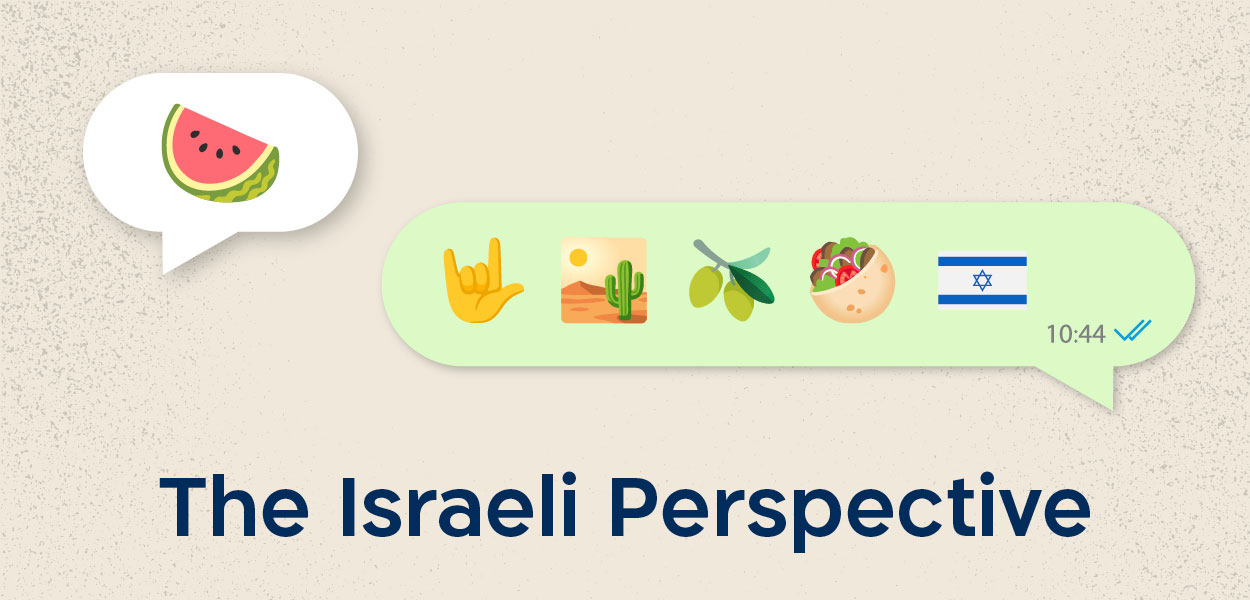
The Israeli Perspective
Yet every story has another side. In Israel, where watermelons are a staple of hot summers and where the country produces a whopping 140,000 tons annually, this digital co-opting hasn't gone unnoticed. Enter the counter-narrative: Pro-Israeli social media users have begun their own campaign to reclaim the watermelon emoji. It's not about fruit anymore; it's about identity, representation, and the power of symbols in the digital age. Some Israeli users have started adding emojis of the Israeli flag, watermelon, and yellow ribbon (for the hostages) to their usernames, while others are creating actual content around watermelons: recipe videos, which are inherently popular on social media, featuring watermelons with the Israeli flag proudly displayed in the background. Other users (typically younger ones) are simply riding existing trends, adding watermelon eating to dances, trendy sounds, and more. Some have gone as far as creating simple online games centered around watermelons, while pro-Israeli creators are directly addressing the appropriation of the watermelon as a Palestinian symbol, calling it an unfounded act.
Marketing Insights from the Emoji Wars This digital tug-of-war offers fascinating insights for marketers:
- The Power of Symbols: Who knew a fruit could carry so much meaning? It reminds us that in the right context, even the simplest symbols can convey complex messages.
- The Importance of Proactive Strategies: The pro-Israeli response underscores the need for brands to be vigilant about their symbols and ready to reclaim them if necessary.
- Authenticity Matters: The most effective responses are those rooted in genuine cultural connections. Israel's agricultural tie to watermelons provides an authentic base for their counter-narrative.
- David vs. Goliath in the Digital Age: The pro-Palestinian digital presence significantly outnumbers the pro-Israeli one. It's a reminder that in the world of digital marketing, it's not always about who's loudest, yet sometimes it is.
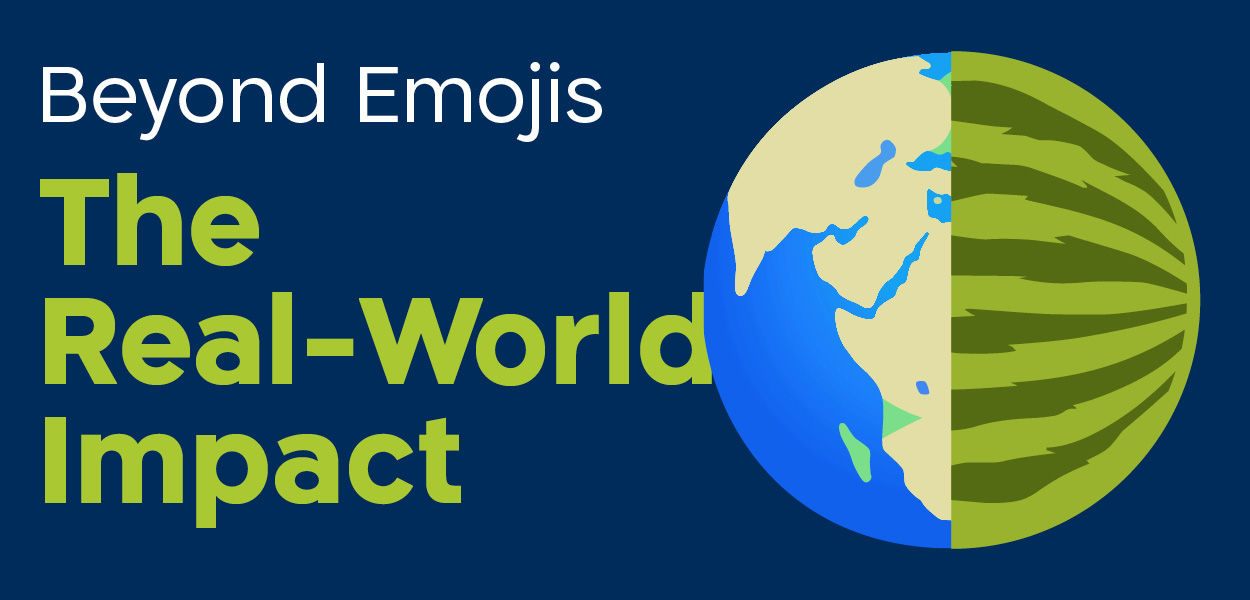
Beyond Emojis: The Real-World Impact
While we engage in digital discourse, let's not forget the real-world stakes. Our brave soldiers are fighting daily to protect our nation and bring our hostages home. This online 'battle' is more than just emojis and trends; it's our way of supporting Israel's narrative on the global stage. As we participate in these digital efforts, we stand united with those on the front lines, showcasing the resilience and spirit of the Israeli people. Every post, every share, is a small act of solidarity that contributes to our national strength and resolve. In this digital age, we all have a role to play in supporting our country and its values.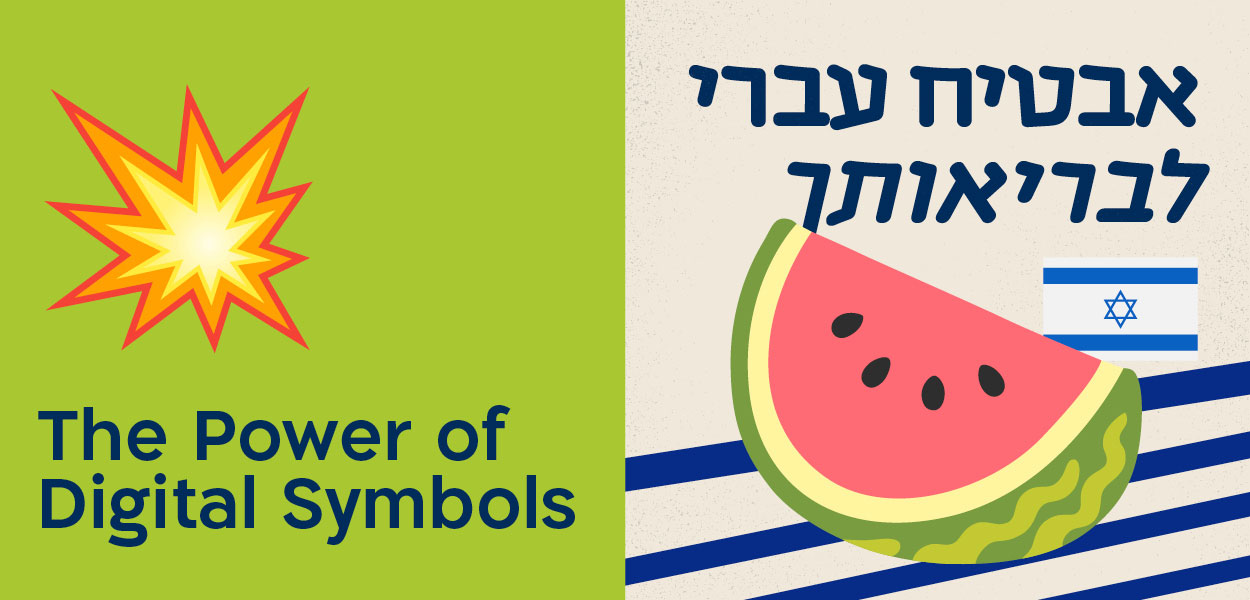
Conclusion: The Power of Digital Symbols
This National Watermelon Day, as we enjoy this summer fruit, let's also appreciate the complex world of digital symbolism it represents. It's a world where marketers, activists, and everyday users are constantly innovating, adapting, and yes, sometimes battling, in the ever-evolving landscape of online communication. After all, in the grand fruit bowl of digital marketing, the watermelon has proven it's not just a seasonal favorite – it's a year-round player in the game of global narratives. Join the Digital Movement Want to show some love to Israeli content creators this Watermelon Day? Here are a few ways you can contribute: 1. Follow prominent Pro-Israeli content creators: Adiel - TikTok Instagram Montana Tucker – Instagram TikTok Baby Ariel - TikTok Instagram Michael Rapaport – Instagram Tiktok Daniel Ryan Spaulding - Instagram TikTok Mia - TikTok Instagram Stop antisemitism – TikTok 2. Like and share posts featuring the "Hebrew Watermelon": instagram instagram tiktok tiktoK tiktok tiktok tiktok tiktok tiktok 3. Feeling creative? Use this trending TikTok sound to make your own Watermelon Day video: Tiktok Remember, this upcoming Watermelon Day might see increased pro-Palestinian activity on social media. For those of us who are pro-Israel and want to contribute, the methods mentioned above are a great way to start. Every like, share, and post counts in this digital age of narrative shaping. Let's make our voices heard while remembering the real battles being fought and the importance of standing united for Israel.Stars are born. Winning B2B brands are built over time.
By
Nirit Elyovich, MBA
, 07/07/2024
Brand building is always complex, but B2B brands bring a whole level of complexity that simply doesn’t exist in the B2C world. It's a golden opportunity to create a one-of-a-kind standout brand promise that will make a difference in the world.
Building a new brand or giving an existing brand a facelift, is a golden opportunity to create a one-of-a-kind standout brand promise that will make a difference in the world. Building a significant brand is complex, but B2B brands bring a whole level of complexity that simply doesn’t exist in the B2C world. Decision-making processes are lengthy, decision-makers come and go, and increasingly, the decision-makers are Gen Y and Gen Z. The road to the end user is paved with importers, distributors, and dealers. The orientation of most of the people you are working with is engineering or sales. Your brand needs to make its way into everyone's hearts on the long and winding road ahead. From time to time, I still hear that "in the business world, people make rational decisions." In my experience, people are people even when they sit in the decision-making chair. Their considerations are professional, business, and personal and the brand needs to touch all these points
A meaningful brand must be relevant, differentiated, and inspired1. Be relevant
Before you begin, define your audience. Unlike launching a product line that appeals to distinct customers, a B2B brand speaks to a wide range of audiences – existing and potential customers, employees and candidates, investors, suppliers, opinion leaders, and influencers.
However, you operate in a very specific world, so finetune the audience that interests you and create circles of influence. Who is in the first circle and who is in the more distant circles? The brand needs to speak directly and accurately to members of the first circle and still be relevant to other circles.
To be relevant, you need to know your audience, what their challenges are, and where you can help them deal with their challenges well. To motivate people, we must touch their “operating” buttons, speak their language, and solve the problems that bother them. We want to sell them what they want to buy and not what we want to sell — even if it's the same thing.
2. Build a differentiated value proposition
To build a differentiated value proposition, start with A, B, and C: Assets, Benefits, and Core Values. Assets – What are your biggest assets? What strengths are you most proud of? Make a list of the things you're best at – unique patented technology, people with unique knowledge, exceptional support and service, and more. Make sure that every strength that makes up your list is grounded in reality, and not an aspiration for something you'd like to have. From the list, extract the three most significant strengths. As much as possible, select those that differentiate you from the competition. Benefits –Step into your customers' shoes and think about what they get out of your strengths. This is where you ensure that you provide professional benefits that help them upgrade their professional field; business benefits that contribute to their business performance; and no less important, personal benefits. Ultimately, everything is personal simply — because people want to make sure that choosing you promotes their reputation within the organization. Core Values – Brand values are always important, but even more so in the B2B world. People are an integral part of your value proposition – whoever defines the specifications with the customer, develops, sells, installs or integrates, provides service and support – all these and more bring the brand to life. They must follow a uniform set of values to ensure that they deliver the benefits to the customer and subsequently deliver on the brand promise. If the company was founded recently, the values may be naturally infused into the brand. If the company is alive and kicking, the values are usually passed down over the years. Make sure the values reflect the company's DNA.
There's nothing new under the sun You may find that your competitors have an asset, benefit, or value that appears to be similar to yours. However, the combination of assets, benefits, and values must be unique to your company. That's why starting with unique assets and formulating benefits that address your clients' deep and diverse needs is important.
The more you get to know your clients, the more likely you will produce differentiated benefits. This is another opportunity for differentiation: your founders, owners, and significant employees are the unique spirit that makes your company what it is.
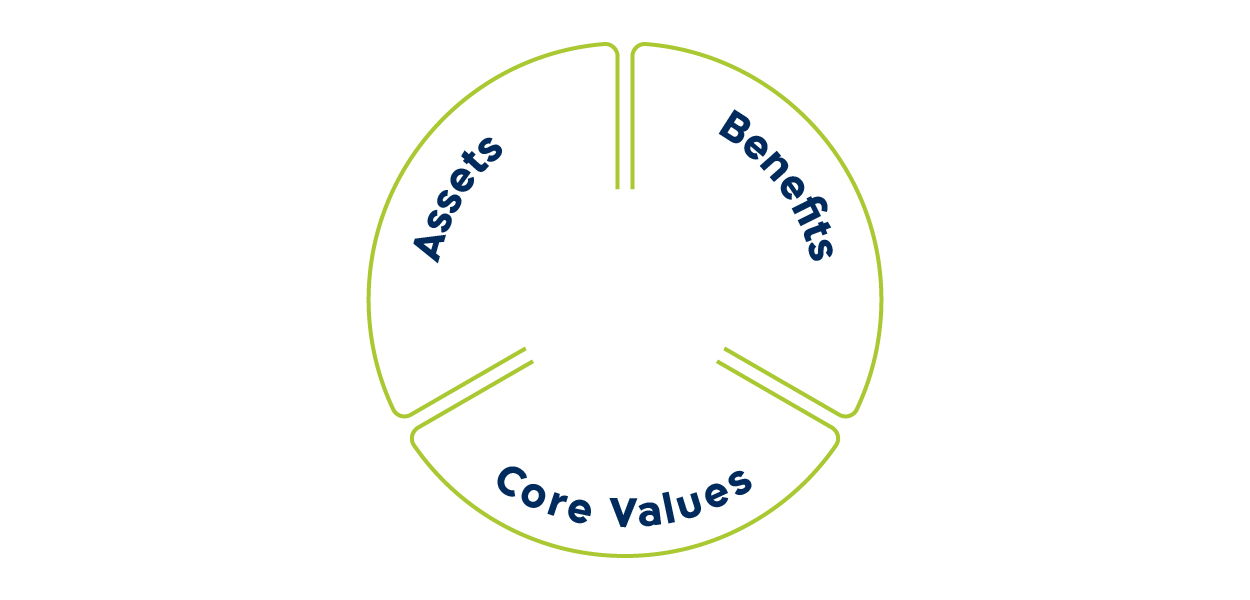
3. Bring inspiration to life with a promise
To make sure your brand inspires you and everyone you meet, go back to your vision. The thing that fascinated you when you started your business or that attracted you to join the company. The reason you get up in the morning and go to work. The North Star lights the way for you, even on days when visibility is poor. Your vision is an ambitious statement that describes what your organization ultimately wants to be. Spoiler alert: you're not supposed to get it, you’re supposed to aspire to reach it. As Aviv Geffen put it, " The moon is so high up there that we can't touch it, and there are some who are still trying.” Your vision is there to lift you high above your daily activities and inspire you.
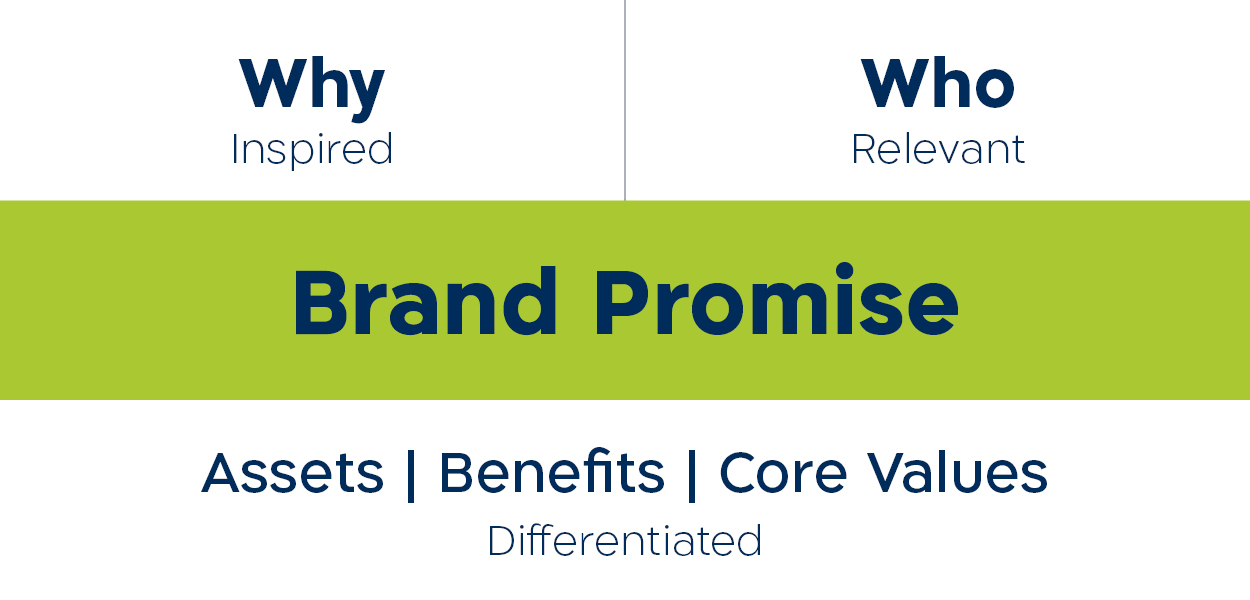
Building or refreshing a brand is a strategic task
Don’t cut corners. Enjoy the journey as much as the destination. Get as many people involved in the process as possible to make everyone feel a part of it. This is how to make them the best ambassadors for your brand.
Formulating a brand strategy is an extremely important and complex process, but it’s only the beginning. From now on, the entire organization has to fulfill it, to bring the brand into the lives of those who experience it exactly as you intended. In the B2B world, your brand will touch a lot of people for many years to come. Make sure that everyone has the same experience, irrespective of the language they speak.
A brand is a promise. A strong brand is a promise that is fulfilled every day in every encounter between the brand and the world.
Branding 101 – The Branding Process Explained
By
Inbar Telem
, 03/09/2023
Want to know the secret sauce of branding? Our latest blog post has it all! Learn how inspiration fuels our journey, how design brings brands to life, and how businesses evolve through effective branding. Click here to uncover the branding recipe for success!

Step One – How to Start the Branding Process for a Business?
The start is life itself, because every day we're exposed to hundreds of messages, ideas, videos, texts, and images. Later it all comes together, and our mind begin processing all these inspirations into new, original, and unique design and language for a specific client. At Oz, we make sure our team, in this case, our designers, is exposed to diverse content worlds and various content styles. This opens up their minds to creativity, from which different brands for different companies can blossom (even if they're in the same industry, they'll create something unique and original – that's the beauty of it!). The branding process for a business begins as a strategic process where we research and analyze the brand, the product, the company, or the service – and answer the age-old questions – what is the company's vision, what makes the company special, what customers expect, and what the competition offers. To differentiate the brand effectively, it's essential to examine competitors – what visual and textual language they use, what messages they convey to the world, and what their customers think of them. During this examination, we come across tons of content and inspiration on the web, and it's a fantastic process. All the research and in-depth analysis, combined with the ideas and inspirations, meld together to form the foundation of the brand – the unique value proposition, the narrative, the promise, and the brand's values.
Step Two – How to Implement the Branding Process?
This is the step everyone seems to be familiar with – the name, logo, fonts, color palette. Supposedly. Since everyone talks about this step, it's crucial to understand that without a solid foundation and thorough research, it won't work. The brand's cornerstones (based on the strategic messages, remember?) need to be creatively and visually translated into the brand's language – both in verbal elements (the brand's name and slogan) and visual elements (the logo, fonts, shapes, and colors). The brand's domain, characteristics, and values will be expressed through its visual appearance. Importantly, the design should not only be eye-catching but should also have longevity. Trends come and go, but your branding should remain stable for years. Our designers have the ability to translate the emotional world into the visual world, making your target audience express positive emotions, identify with your brand, and remember your look (for the next time they encounter you) – or in short, to create an impactful brand for you.
Step Three – How Does a Business Change as a Result of Branding?
So, we've gathered inspiration, worked with a professional branding agency (like OZ, ahem), researched, and analyzed, and the designers have prepared sketches. And the most exciting part – the management approved it! So now what? Implementation! At the end of the branding process and the creation of the brand's visual language, it's time to infuse it into every marketing and reputation aspect of the company. The new language will be applied across the board – on social networks, envelopes, outdoor signs and ads, physical offices, pens and notebooks – anything that comes to mind (and if it doesn't, our client managers have plenty of ideas). Effective design is measured by its versatility. If the base has a strong and focused idea, it will be clear how to continue and develop that into the brand's language in every format – digital and print.Rebranding – so much more than just a logo or color palette
By
Miri Peled
, 19/02/2018
Rebranding – so much more than just a logo or color palette. What you'll need to do when rebranding.
Refresh or rebrand?
When rebranding, you can either refresh and improve your current branding or start over and create an entirely new one. No matter what you decide, the rebranding process involves a lot more than designing a new logo or changing your corporate color palette. Here’s what you’ll need to do:- Defining a clear rebranding strategy.
- Reanalyzing your company’s vision, mission and values.
- Conduct market research and competitor research including new players who may have popped up more recently.
- Research existing customers, potential customers and target audiences.
- Redefine your message.
- Create a new visual identity.
- Create new marketing materials.
- Relaunch your brand (internally and externally).























